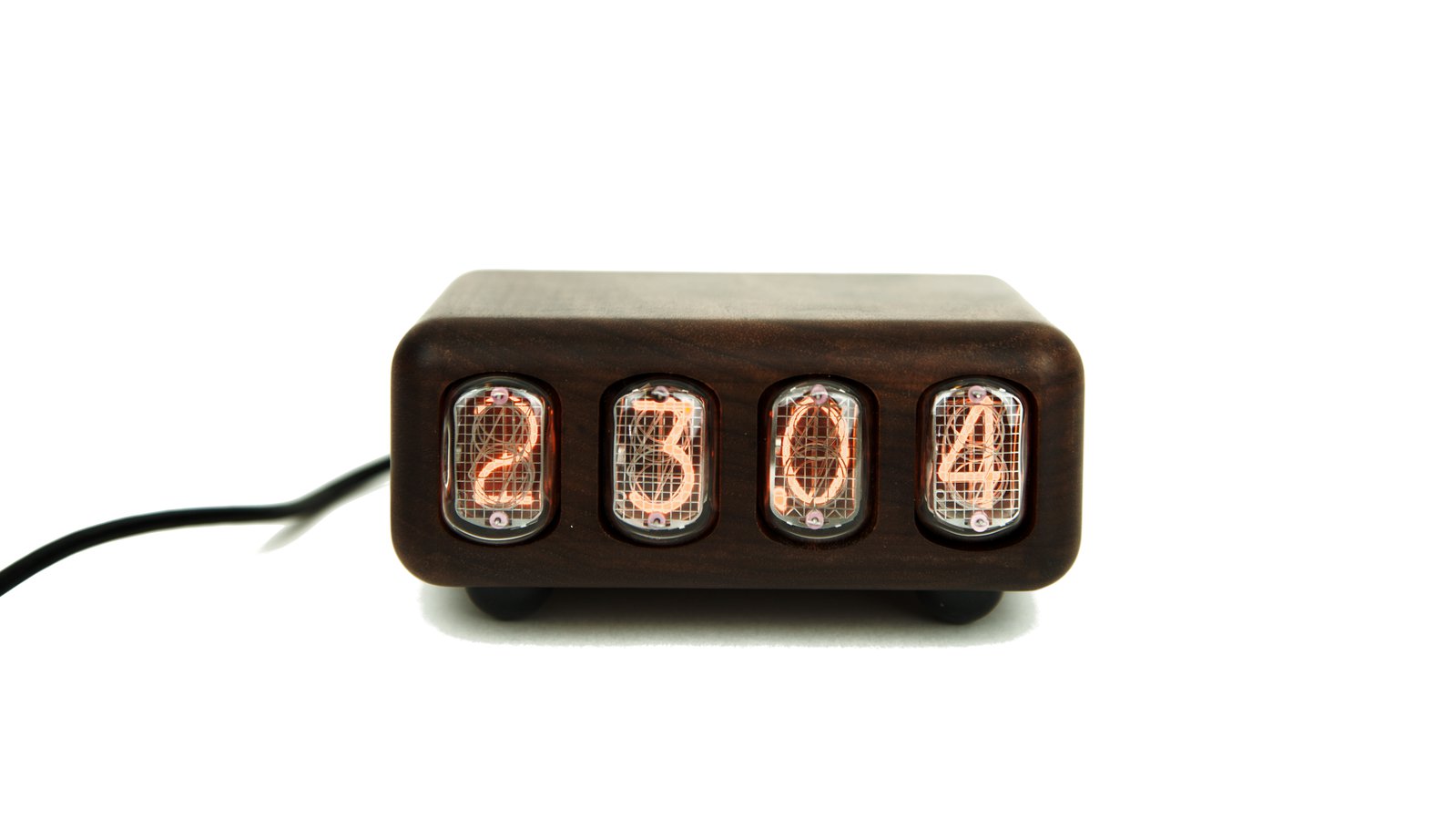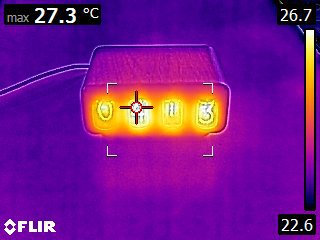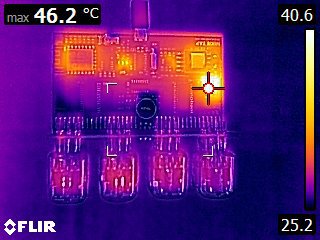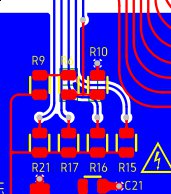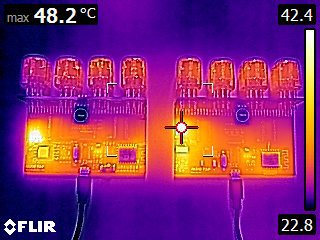Project update 3 of 10
Preparing for Production: Part I
Only three more days left in the campaign!
If you haven’t backed Nixie Tap yet, now is your chance to get this amazing Wi-Fi clock at a discount - the price will likely increase once the campaign ends.
If you’ve already backed the campaign - thank you! You can help us even more by sharing the campaign with someone who might enjoy this project.
Since the campaign has attracted more than 75% of its goal, it’s time to start preparing for the production.
As a first step, I wanted to see how the current prototype performs thermally. Thermal stress reduces part life, and, if present, it may be a sign that there is something wrong.
While the simple math used to calculate power draw and component temperature surely must be accurate, it’s best to check optically. Until humans get infra-red vision, I have to keep borrowing the FLIR E6 from work (psst don’t tell anyone).
So, does it overheat? Let’s find out!
Aaand..No. The device stays cool, only a few degrees Celsius above ambient.
Digging further, let’s see how the PCB heats up:
Ouch! A section of the PCB heats up to 40 degrees! The offending parts are resistors which determine the current flow through the Nixie tubes, and thus determine the digit brightness:
Normally, 40 degrees is not that much. Resistors can survive way bigger temperatures, more than 100 degrees. However, it’s the only part of the circuit which heats up! Not even the PSU section is heating up as much. This needs to be improved.
If these resistor values are high, Nixie brightness suffers. Too low, and resistors are cool, but the Nixies will burn out. The only way forward is to keep burnin’ the same power, but dissipate it better. Maybe, by using bigger components, or by increasing component pad size.
Another thing to note is that this clock project is powered from USB. Early prototypes (Rev A) used Ebay-bought PSU module (you can find it yourself if you search for “nixie 5V to 170V module”). Revision B uses a custom designed PSU stage, designed with efficiency in mind.
Let’s see how these two stack up, left – rev B, right – rev A:
The Ebay module appears to be performing fine from the thermal standpoint. For efficiency measurements, stay tuned for the next update!
